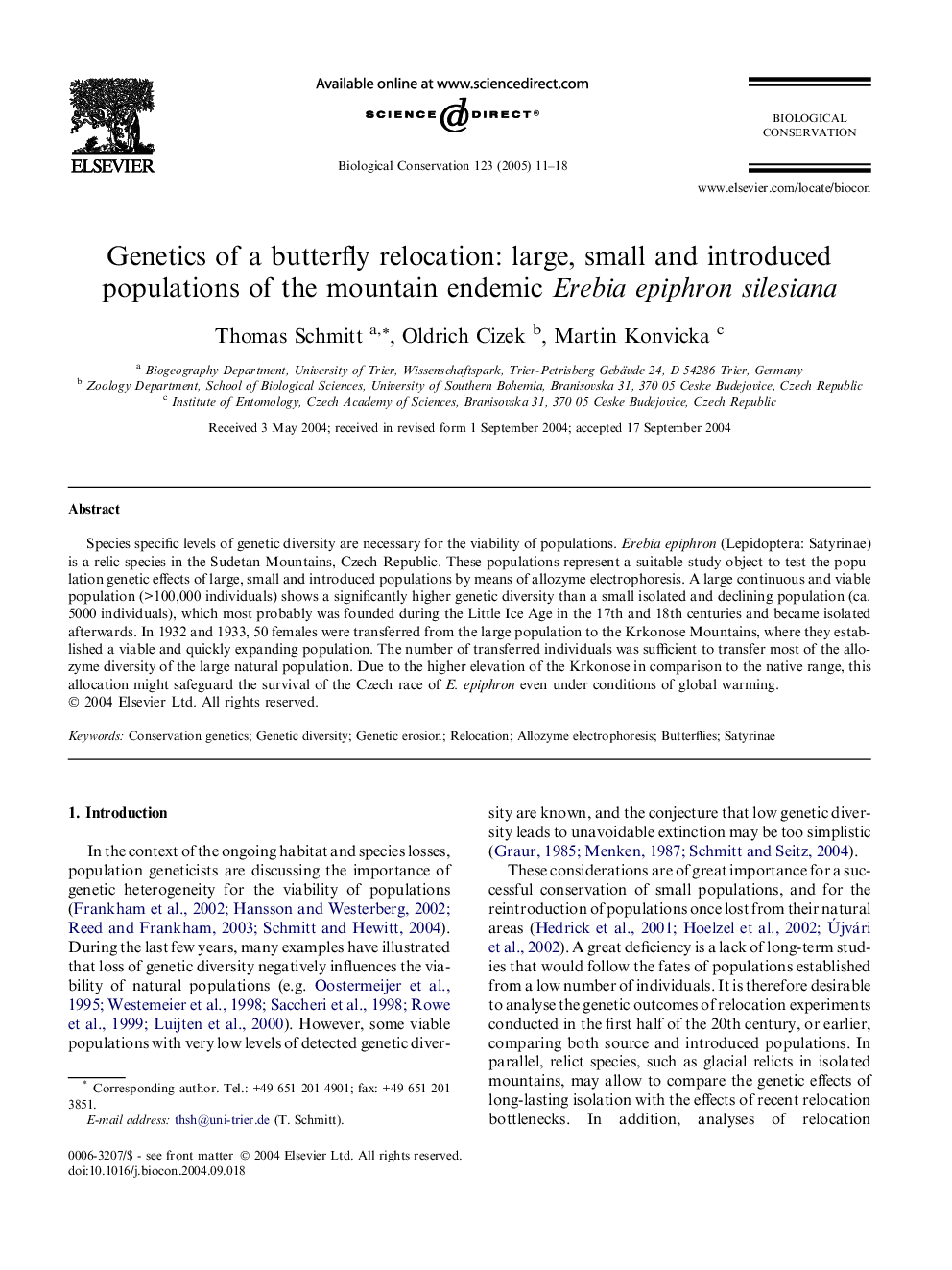| Article ID | Journal | Published Year | Pages | File Type |
|---|---|---|---|---|
| 9445935 | Biological Conservation | 2005 | 8 Pages |
Abstract
Species specific levels of genetic diversity are necessary for the viability of populations. Erebia epiphron (Lepidoptera: Satyrinae) is a relic species in the Sudetan Mountains, Czech Republic. These populations represent a suitable study object to test the population genetic effects of large, small and introduced populations by means of allozyme electrophoresis. A large continuous and viable population (>100,000 individuals) shows a significantly higher genetic diversity than a small isolated and declining population (ca. 5000 individuals), which most probably was founded during the Little Ice Age in the 17th and 18th centuries and became isolated afterwards. In 1932 and 1933, 50 females were transferred from the large population to the Krkonose Mountains, where they established a viable and quickly expanding population. The number of transferred individuals was sufficient to transfer most of the allozyme diversity of the large natural population. Due to the higher elevation of the Krkonose in comparison to the native range, this allocation might safeguard the survival of the Czech race of E. epiphron even under conditions of global warming.
Keywords
Related Topics
Life Sciences
Agricultural and Biological Sciences
Ecology, Evolution, Behavior and Systematics
Authors
Thomas Schmitt, Oldrich Cizek, Martin Konvicka,
